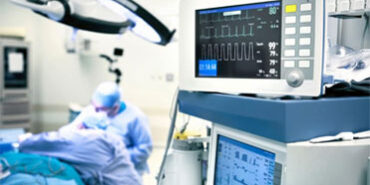Medical Device Stability Testing
Medical Device Stability Testing is conducted to determine the environmental effects such as temperature humidity, light, moisture, pH, agitation, gravity on product strength, quality, and purity. Such testing’s are conducted in the life sciences, chemical, medical devices, IVDs, pharmaceuticals, and food industries. Stability Testing provide supporting evidence to establish product storage and expiry dating criteria.
This type of medical device stability testing is done at various stages of product development and the results of these tests provide information about overall product stability which serves as a basis for claims on storage requirements and shelf life.
Applicability of Medical Device Stability Testing
According to the IMDRF- Essential Principles of Safety and Performance of Medical Devices and IVD Medical Devices, Stability applies to:
-
Sterile and non-sterile medical devices over a given time period whose physical/chemical/functional properties can be altered or compromised.
-
IVD reagents, calibrators, and controls, when stored, transported, and used in the conditions stated by the manufacturer,
-
Lyophilized materials restored to the original state, working solutions and materials removed from sealed containers, when prepared, used, and stored according to the manufacturer’s IFU,
-
Measuring instruments or systems after calibration.
The guideline for stability testing for pharmaceutical products are ICH guideline Q series and there is an FDA guidance for shelf life of medical devices.
Medical Device stability Testing and Shelf Life
This method is used for identifying weak links to a product. The impact of high and low temperature and vibration is determined to precipitate failure modes faster than normal testing approaches.
It is not a pass/fail test, and it requires root cause analysis and corrective action to achieve optimum value from testing. It creates the ability to learn more about the design and material limitations of the product and provides opportunities for continuous improvement of the design before marketing the product.
A HALT testing program includes 5 individual tests as High-temperature step stress, Low-temperature step stress, Vibration step stress, Rapid thermal cycling, Combined Environment.
Types of Medical Device Stability Testing
Shelf life is estimated using two types of stability testing:
- Real-time medical device stability testing
- Accelerated medical device stability testing
A. Real-time stability testing
A real-time medical device stability testing is conducted to establish long-term product stability. This is carried out for a longer duration of the test period to allow greater degradation of the product under specified storage conditions.
This type of study may assess the performance based on the physical characteristics and activity of a product for the projected lifetime of the product. The product will be monitored until the required dating period is achieved or it fails the specification.
The test data will be collected at an acceptable frequency during this review, so that trend analysis can differentiate uncertainty from day-to-day ambiguity. Real-time study measure points a period of 6 months, 1 year, or as many as 2-5 years. Product expiration can be determined from this study.
B. Accelerated Medical Device Stability Testing
Accelerated medical device stability testing are used to predict a product’s expiration date or life period rapidly when there is no real-time data available.
It is a modified stability testing method. In this type of analysis, the product will be exposed to a high level of stress (usually regulated changes in temperature or humidity), during which the product will be placed in a condition that accelerates the degradation and this knowledge will be used as an early indicator to predict the shelf life and thus shorten the development schedule.
The test duration is the timeframe predicted or needed for the expiry of the product (1 year., 2yrs, etc.). This test method is conducted to bring fresh or re-manufactured products into the market as soon as possible.
The concept of accelerated stability testing is based on the Arrhenius equation which describes the relationship between storage temperatures and degradation rate: Studies
lnK= lnA + Δ𝐸/𝑅𝑇
where K = degradation rate/s,
A = frequency factor/s, (Specifically relates to the molecular collision, deals with the frequency of molecules that collide in the correct orientation and with enough energy to initiate a reaction. It is a factor that is determined experimentally, as it varies with different reactions)
ΔE = activation energy (kJ/mol),
R = universal gas constant (0.00831kJ/mol),
T=absolute temperature (K)
The calculation can be interpreted with an example as below
Shelf Life Calculation
FACTOR (F):2 [TAA-TRT/10]
Where TAA = Accelerated aging temperature
TRT = Ambient temperature
Shelf life = Study time period x Factor
= 12 x 22.5
= 12 x 5 = 60 months (5 years)
To know more contact us.



